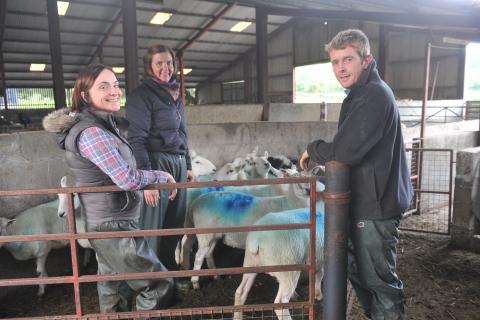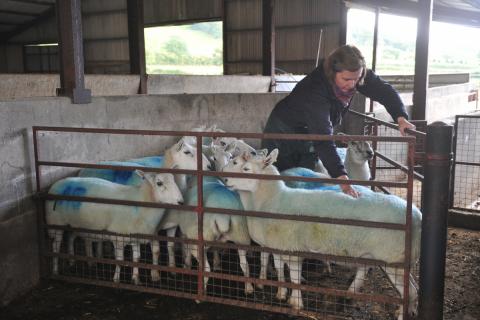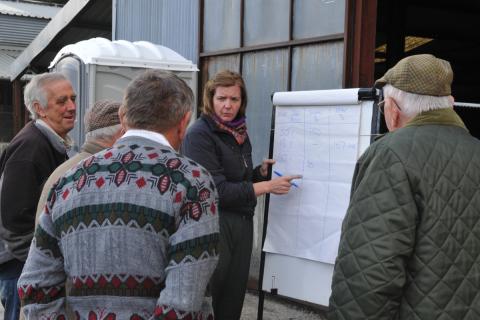29 August 2019
Condition scoring at weaning is allowing a Carmarthenshire sheep enterprise to run ewes in groups according to their nutritional needs in the run-up to tupping.
Arwel and Gail Jenkins recently hosted a Farming Connect knowledge transfer event at their farm where independent sheep expert Dr Liz Genever advised farmers on strategies for optimising tupping outcomes.
Mr and Mrs Jenkins run a flock of 400 breeding ewes at Ynysau Uchaf, an 80-hectare National Trust farm at Pumpsaint.
They start preparing for tupping at weaning, from mid-July, by body condition scoring ewes and sorting them into thin, fat and fit groups.
“It is vital that we start preparing the flock for tupping at the earliest opportunity, the better the condition of the ewe the more efficient she is at producing twins and she is less reliant on supplementary feed,’’ said Mrs Jenkins.
“We have found that if a ewe is at optimum condition at lambing she has a lot of milk and it means we need to spend less time with her and her lambs.’’
After weaning, thin ewes at Ynysau Uchaf graze on root crops or grass reseeds while the other groups are run on older leys.
During this sorting process, lame ewes are identified and are kept as a separate group before being reintroduced to the main flock at tupping.
Mouths and udders are also checked and any ewes with broken mouths or poor udders are sold as cull ewes.
Dr Genever warned farmers against leaving weaning too late as ewes need time to recover their body condition before tupping.
Allow at least 10 weeks, often longer, she advised.
“Body condition score ewes at weaning and allocate grazing on this basis with leaner ewes getting the best grazing,’’ she said.
“It will take six to eight weeks on good grazing to gain a condition score and many ewes have more than that to make up.’’
Aim for BCS 3-3.5 for lowland ewes and 3 for upland breeds.
Cull any ewes that are not fit for purpose.
Rams need an MOT at least eight weeks pre-tupping - include body condition for these too and feed to get them up to condition if required.
Plan grazing ahead as ewes need to at least maintain their condition through the first six weeks of pregnancy.
“Work out what you need for ewes from weaning through the autumn,’’ said Dr Genever.
This can help facilitate decision making such as bringing in extra feed or selling stock
Sarah Hughes, Farming Connect Red Meat Technical Officer (South West Wales), said that with condition score at mating influencing so many aspects of sheep production it was essential that farmers plan ahead.
“There is a simple way to assess body condition score and it is important that farmers do this by putting their hand on the ewes and not rely only on visual assessment,’’ she said.
Farming Connect, which is delivered by Menter a Busnes and Lantra, is funded by the European Agricultural Fund for Rural Development and Welsh Government



